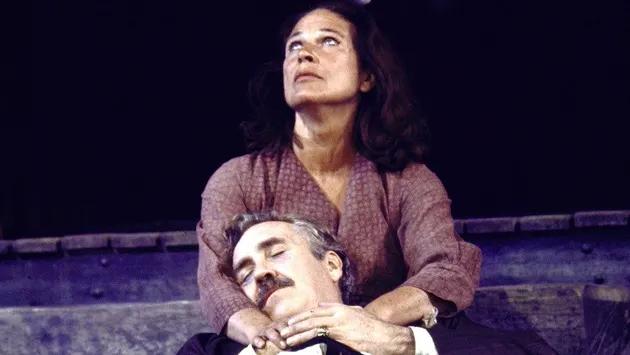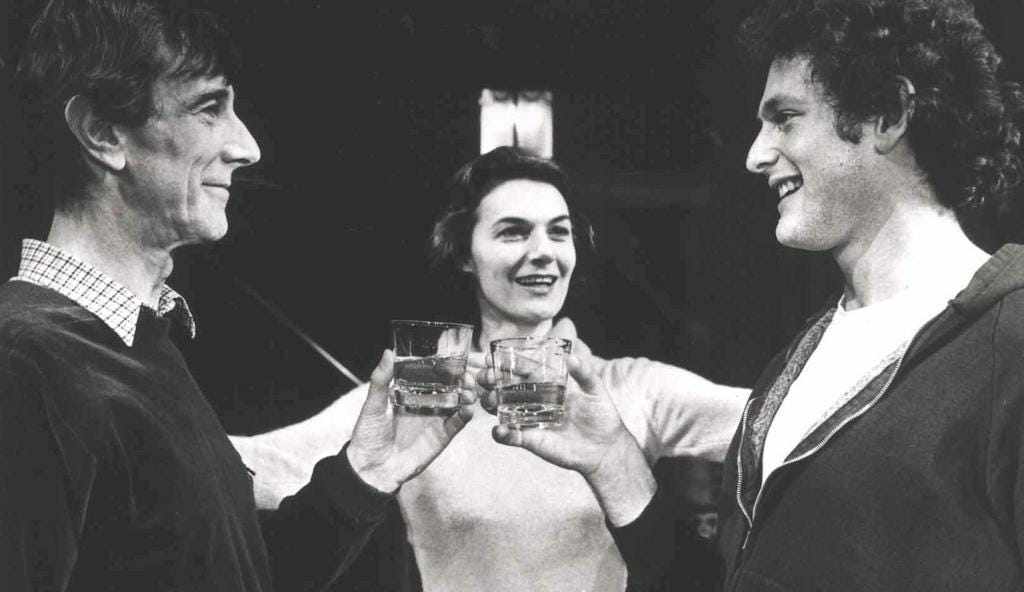
Though the phrase has passed into antiquity, being praised as a “light comedian” was once a compliment of the highest order. Those capable of displaying its delicate, witty, even brittle style were the opposite of "low comedians," those possessing a more broad and farcical nature. All through the 1930s and '40s in Broadway plays, musicals and films, light comedians ruled. Among the men and women most notable were Eve Arden, Mary Astor, Ralph Bellamy, Clifton Webb and Roland Young — all nominated for Academy Awards for their efforts.
Today Kelsey Grammar is perhaps the prime example of this specialized breed. Anyone who has watched even a single episode of the long-running Frasier would recognize how much of Grammar's technique is a pure steal from Jack Benny (and the equally adept David Hyde Pierce, who could easily be convicted of this sort of thievery as well). And though many sitcoms have tried to imitate its tone, Frasier has proven inimitable, now sadly a thing of the past.
Mention of this is to set the stage for Jack Haley, an exemplar of a light comedian. Like his fellow Yellow Brick Road compatriots, Haley came up through vaudeville, then made his mark on stage and in film during what is now considered a Golden Age. His was a style that audiences ate up like a rich dessert in more than forty film appearances where he would often croon a song or two, oozing charm with his pure Irish tenor. Check out this number from 1933's Sitting Pretty (with songwriter Mack Gordon, winner of the 1943 Academy Award for Best Song with the popular standard "You'll Never Know"), in a rare and uncredited acting appearance. Gordon also wrote the song with Harry Revel (playing off-screen on the piano).
Haley is playing a song plugger here, someone whose job it was to sell songs to music publishers — a job he once had starting out. Born John Joseph Haley August 10, 1897 in Boston, Massachusetts, his father, John Joseph Sr was a waiter. Having worked his way up to a ship's steward, he tragically died in the wreck of the schooner Charles A. Briggs at Nahant, Massachusetts on February 1, 1898 when little Jack was only six months old.
By age six, Haley was already a singer. At eighteen, he went to New York to start a career in musicals, which is where he began plugging songs, eventually leading to vaudeville, which is where in 1921 he met Florence McFadden, another performer, who became his wife. Haley made his Broadway debut in 1924, shortly before his twenty-seventh birthday, in a forgotten musical revue titled Round the Town. His film debut came in a 1927 silent film as a Radio Announcer (!) just as talkies were coming in.
When movie musicals became the rage, Haley moved to Hollywood where he was offered better opportunities. He quickly became a star at 20th Century-Fox where he did nineteen films in five years (that was the output in those days, folks) working alongside everyone from Shirley Temple to Ginger Rogers. Then, in 1939, and under contract to Fox, he was sent by the studio as a loan-out to MGM for The Wizard of Oz, a last-minute assignment that became responsible for his film immortality.
What had happened was that Buddy Ebsen, who had originally been cast as the Scarecrow and got pushed aside when Ray Bolger balked at playing the Tin Man, fell ill. Ebsen was okay with losing the Scarecrow and dutifully underwent the makeup and costume tests as well as recording all his vocals for the Tin Man; his solo "If I Only Had a Heart" along with his singing in group songs like "We're Off to See the Wizard." Then, after about nine days of filming, Ebsen was having difficulty breathing. He had ingested the aluminum powder used in the silver makeup design and was, to put it inelegantly, poisoned with a severe bronchial infection. He was in a hospital for two weeks before being sent home for a month's convalescence. The poor man nearly died and MGM, with little caring or empathy, simply fired him from the picture.
In an interview years later, Ebsen recalled his ignominious firing: “There was in those days particular pressure (and still is) but they just didn’t believe that actors got sick, you know, legitimately were casualties. I think they suspected that I was unhappy because originally, I had been promised the part of the Scarecrow and they switched me to the Tin Man and they thought I bore a grudge and now I’d get even with them. They thought I was malingering and so Mervyn [LeRoy, the film’s producer] called the hospital and I can still remember the nurse in the conversation with him. I was under an oxygen tent at the time… “Why isn’t Mr. Ebsen on the set?” and she said, “Listen you, Mr. Ebsen is a very sick man and we’re going to keep him here until he’s well.” And so, they did. And they got somebody else to play the part. But they never quite believed that I was really sick.”


Of course, Buddy Ebsen went onto a career that included not one, but two hit television series; the detective drama Barnaby Jones and the sitcom classic The Beverly Hillbillies, the latter of which was the #1 show on television for two straights seasons in the 1960s. It was said though that he never got over losing the Tin Man. As proof, when it came time to title his autobiography, he called it The Other Side of Oz.
When Haley got the call, he never asked what happened to his predecessor and no one told him. He just assumed Ebsen got fired. The makeup team had also quietly changed the aluminum powder in the Tin Man design to aluminum paste, with fingers crossed it would prevent further disaster. However, Haley didn’t make it completely free of accident. He got a severe eye infection from the makeup and had to take four days off from filming, where he was forced to stay in a dark room to make sure it wouldn’t affect his vision permanently. Happily, it did not.
With no rehearsal, it was a conversation with the film’s director Victor Fleming that cemented Haley's Tin Man characterization quickly and efficiently. “The first day’s shooting we had a little talk,” Haley recalled in an audio interview. “Have you thought about how you’re going to approach this?" Fleming asked. “I said, ‘Sure.’ He said, ‘How?’ I said, “I have a son about four or five years old, and when I go home at night, he insists I go up and tell him a story. My thinking is to have that same approach in the character.’ He said, ‘Give me an example.’
And this is where, in the audio interview, Haley takes on his light and breathy Tin Man voice: "I said, ‘Well, a long time ago I was standing here, and it started to rain…” Fleming told him “that’s it,” and thus the Tin Man was born, with Haley speaking his lines as if to a child all through the film. Next time you watch it, keep that in the back of your head and you'll see what an inspired choice it was on Haley's part.

Haley returned to Broadway only three times after Wizard of Oz, all in musical revues. In his final one, Inside U.S.A., he introduced one of the great "list" songs ever written, Arthur Schwartz and Howard Dietz's "Rhode Island is Famous for You." Co-starring with the outrageous Beatrice Lillie, the revue had buried in its chorus such future famous talents as Thelma Carpenter, Jack Cassidy and Carl Reiner. Here's Haley, backed by the odd choice of a chorus for this wonderful song, dependent upon hearing every syllable of its witty lyrics:
As he grew older, Haley showed less and less enthusiasm for show business. One of the reasons for that is, like many smart Hollywood actors, he wisely invested his earnings in California real estate and became a wealthy man. He was lured out of his retirement on rare occasions, mostly to work with old friends like Robert Young on his hit series Marcus Welby, M.D. One time, he was hired to play a kindly grandfather in Norwood, a 1973 film that happened to be directed by his son, Jack Haley Jr., who went on to a prestigious career directing television awards shows like the Academy Awards. One of Jack Haley Sr.'s final appearances was when he presented the Oscar for Best Costume Design in 1979 beside his old friend, Ray Bolger (of course it was the idea of his son who produced the show that year). Haley died three months later of a heart attack at the age of eighty-one. But watch him and Bolger here, adorable in what was Haley's final curtain call.
Rounding out this series on the character men in The Wizard of Oz, all of whom had their roots in the theatre, you can read my previous entries on Frank Morgan, Ray Bolger and Bert Lahr by clicking on these links.
If you enjoy these columns, check out Up in the Cheap Seats: A Historical Memoir of Broadway, available at Amazon.com in hardcover, softcover and e-book. And please feel free to email me with comments or questions at Ron@ronfassler.org.





















Write a comment ...